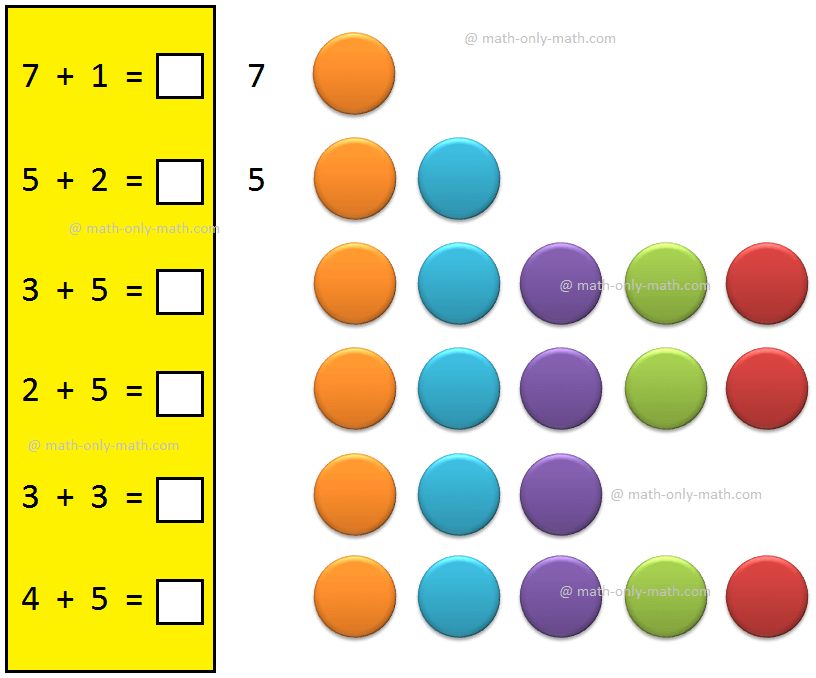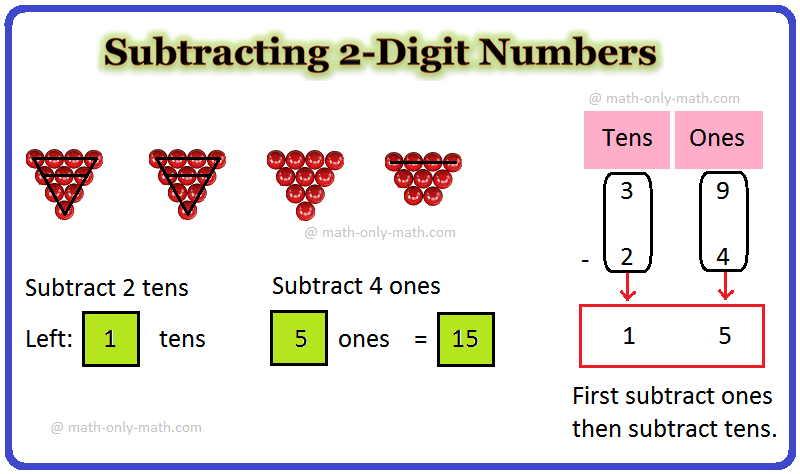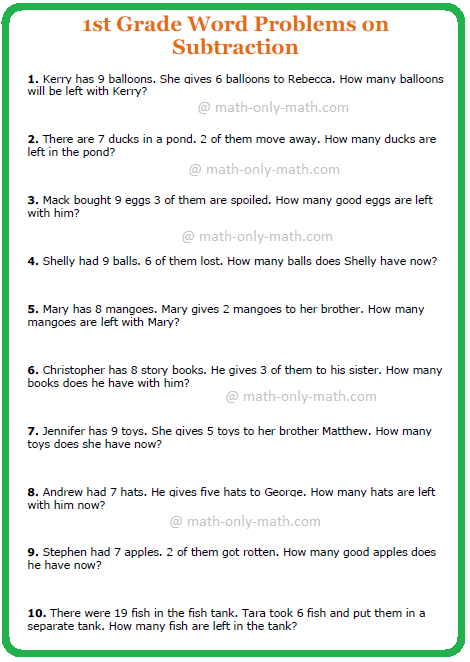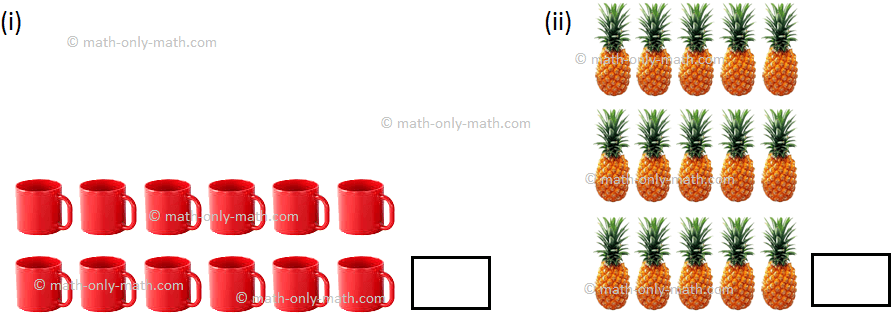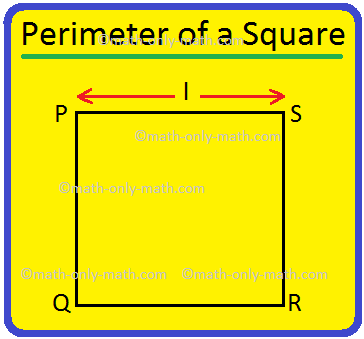Subtraction of Matrices
Two matrices A and B are said to be conformable for subtraction if they have the same order (i.e. same number of rows and columns) and their difference A - B is defined to be the addition of A and (-B).
i.e., A – B = A + (-B)
For example:
\(\begin{bmatrix} a_{11} & a_{12} & a_{13}\\ a_{21} & a_{22} & a_{23}\\ a_{31} & a_{32} & a_{33} \end{bmatrix}\) - \(\begin{bmatrix} b_{11} & b_{12} & b_{13}\\ b_{21} & b_{22} & b_{23}\\ b_{31} & b_{32} & b_{33} \end{bmatrix}\)
= \(\begin{bmatrix} a_{11} & a_{12} & a_{13}\\ a_{21} & a_{22} & a_{23}\\ a_{31} & a_{32} & a_{33} \end{bmatrix}\) + \(\begin{bmatrix} - b_{11} & - b_{12} & - b_{13}\\ - b_{21} & - b_{22} & - b_{23}\\ -b_{31} & - b_{32} & - b_{33} \end{bmatrix}\)
= \(\begin{bmatrix} a_{11} - b_{11} & a_{12} - b_{12} & a_{13} - b_{13}\\ a_{21} - b_{21} & a_{22} - b_{22} & a_{23} - b_{23}\\ a_{31} - b_{31} & a_{32} - b_{32} & a_{33} - b_{33} \end{bmatrix}\)
Again, if A = (aij)m, n and B = (bij)m, n then their difference A - B is the matrix C = (cij)m,n where cij = aij - bij, i = 1, 2, 3, ...... , m, j = 1, 2, 3, ...., n.
For example:
If A = \(\begin{bmatrix} a_{11} & a_{12} & a_{13}\\ a_{21} & a_{22} & a_{23}\\ a_{31} & a_{32} & a_{33} \end{bmatrix}\) and B = \(\begin{bmatrix} b_{11} & b_{12} & b_{13}\\ b_{21} & b_{22} & b_{23}\\ b_{31} & b_{32} & b_{33} \end{bmatrix}\), then
A - B = \(\begin{bmatrix} a_{11} - b_{11} & a_{12} - b_{12} & a_{13} - b_{13}\\ a_{21} - b_{21} & a_{22} - b_{22} & a_{23} - b_{23}\\ a_{31} - b_{31} & a_{32} - b_{32} & a_{33} - b_{33} \end{bmatrix}\) = C
Note: If A and B be matrices of different orders, then A - B is not defined.
Example on Subtraction of Matrices:
1. If A = \(\begin{bmatrix} 1 & 2\\ 3 & 1 \end{bmatrix}\) and B = \(\begin{bmatrix} 2 & 4\\ 1 & 3 \end{bmatrix}\), then
A - B = \(\begin{bmatrix} 1 & 2\\ 3 & 1 \end{bmatrix}\) - \(\begin{bmatrix} 2 & 4\\ 1 & 3 \end{bmatrix}\)
= \(\begin{bmatrix} 1 - 2 & 2 - 4\\ 3 - 1 & 1 - 3\end{bmatrix}\)
= \(\begin{bmatrix} -1 & -2\\ 2 & -2 \end{bmatrix}\)
2. If A = \(\begin{bmatrix} 0 & 1 & 2\\ 2 & -3 & 1\\ 1 & -2 & 0 \end{bmatrix}\), B = \(\begin{bmatrix} -1 & 0 & 2\\ 3 & 2 & 1\\ -2 & -1 & 0 \end{bmatrix}\) and M = \(\begin{bmatrix} 4 & 2\\ 1 & 3 \end{bmatrix}\), then
A - B = \(\begin{bmatrix} 0 & 1 & 2\\ 2 & -3 & 1\\ 1 & -2 & 0 \end{bmatrix}\) - \(\begin{bmatrix} -1 & 0 & 2\\ 3 & 2 & 1\\ -2 & -1 & 0 \end{bmatrix}\)
= \(\begin{bmatrix} 0 - 1 & 1 - 0 & 2 - 2\\ 2 - 3 & -3 - 2 & 1 - 1\\ 1 - (-2) & -2 - (-1) & 0 - 0 \end{bmatrix}\)
= \(\begin{bmatrix} -1 & 1 & 0\\ -1 & -5 & 0\\ 3 & -1 & 0 \end{bmatrix}\)
A - M is not defined since the order of matrix M is not equal to the order of matrix A.
B - M is also not defined since the order of matrix M is not equal to the order of matrix B.
Note: Let A and B are m × n matrices and c, d are scalars. Then the following results are obvious.
I. c(A - B) = cA - cB,
For Example:
If A = \(\begin{bmatrix} 1 & 3\\ 2 & 4 \end{bmatrix}\) and B = \(\begin{bmatrix} 2 & 1\\ 3 & 0 \end{bmatrix}\) are m × n matrices and 4 is scalar. Then
\[4\left (\begin{bmatrix} 1 & 3\\ 2 & 4 \end{bmatrix} - \begin{bmatrix} 2 & 1\\ 3 & 0 \end{bmatrix}\right ) = 4\begin{bmatrix} 1 & 3\\ 2 & 4 \end{bmatrix} - 4 \begin{bmatrix} 2 & 1\\ 3 & 0 \end{bmatrix}\]
II. (c - d)A = cA - dA.
For Example:
If A = \(\begin{bmatrix} 2 & 0\\ -1 & 5 \end{bmatrix}\) be m × n matrix and 4, 2 are scalars. Then
\[\left (4 - 2\right )\begin{bmatrix} 2 & 0\\ -1 & 5 \end{bmatrix} = 4\begin{bmatrix} 2 & 0\\ -1 & 5 \end{bmatrix} - 2\begin{bmatrix} 2 & 0\\ -1 & 5 \end{bmatrix}\]
From Subtraction of Matrices to HOME
Didn't find what you were looking for? Or want to know more information about Math Only Math. Use this Google Search to find what you need.
Recent Articles
-
Adding 1-Digit Number | Understand the Concept one Digit Number
Apr 26, 24 01:55 PM
Understand the concept of adding 1-digit number with the help of objects as well as numbers. -
Subtracting 2-Digit Numbers | How to Subtract Two Digit Numbers?
Apr 26, 24 12:36 PM
In subtracting 2-digit numbers we will subtract or minus a two-digit number from another two-digit number. To find the difference between the two numbers we need to ‘ones from ones’ and ‘tens from -
1st Grade Word Problems on Subtraction | Subtracting 2-Digit Numbers
Apr 26, 24 12:06 PM
In 1st grade word problems on subtraction students can practice the questions on word problems based on subtraction. This exercise sheet on subtraction can be practiced by the students to get more ide… -
Subtracting 1-Digit Number | Subtract or Minus Two One-Digit Number
Apr 26, 24 11:21 AM
In subtracting 1-digit number we will subtract or minus one-digit number from one-digit number or one-digit number from 2-digit number and find the difference between them. We know that subtraction me… -
Perimeter of a Square | How to Find the Perimeter of Square? |Examples
Apr 25, 24 05:34 PM
We will discuss here how to find the perimeter of a square. Perimeter of a square is the total length (distance) of the boundary of a square. We know that all the sides of a square are equal. Perimete…

